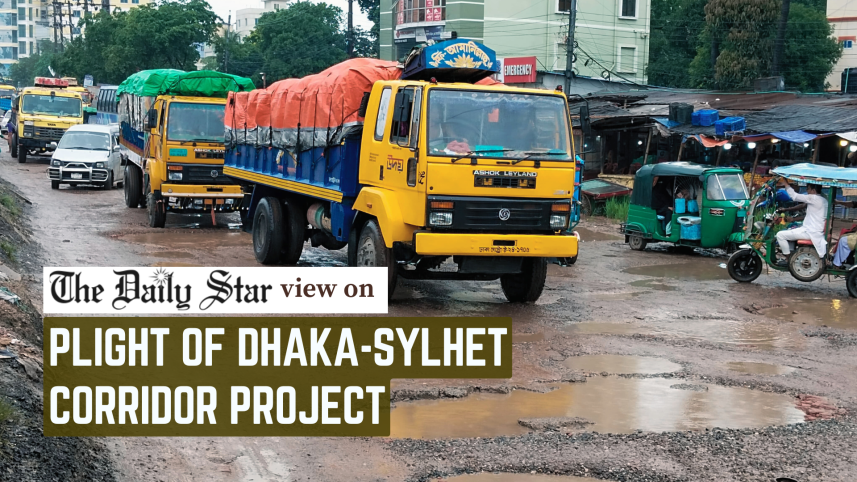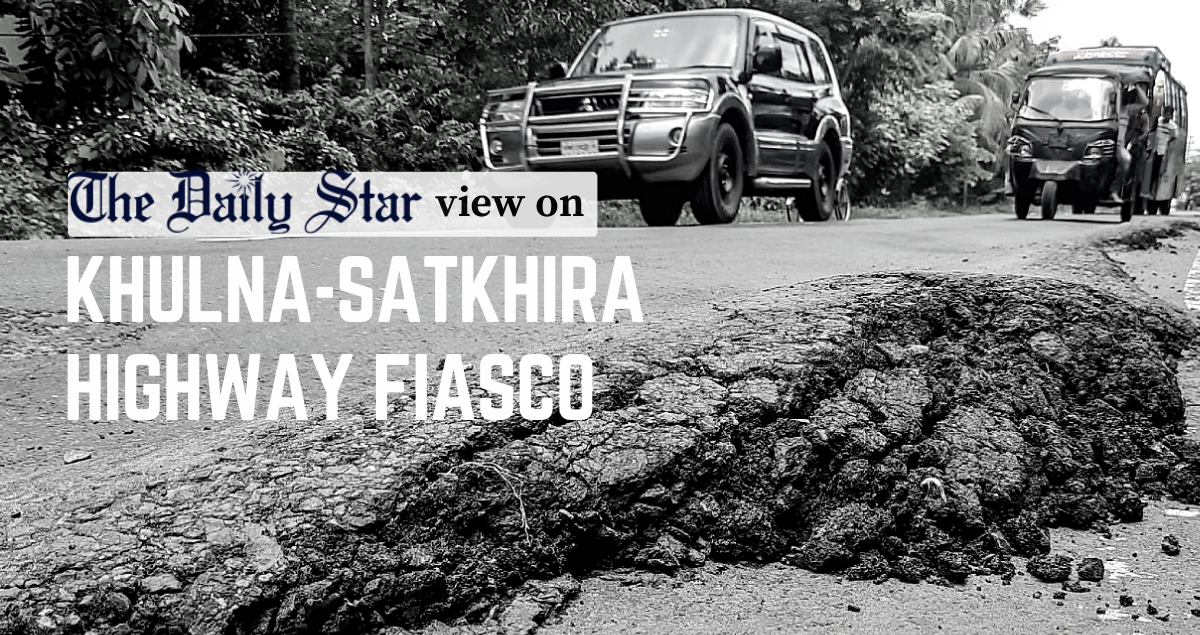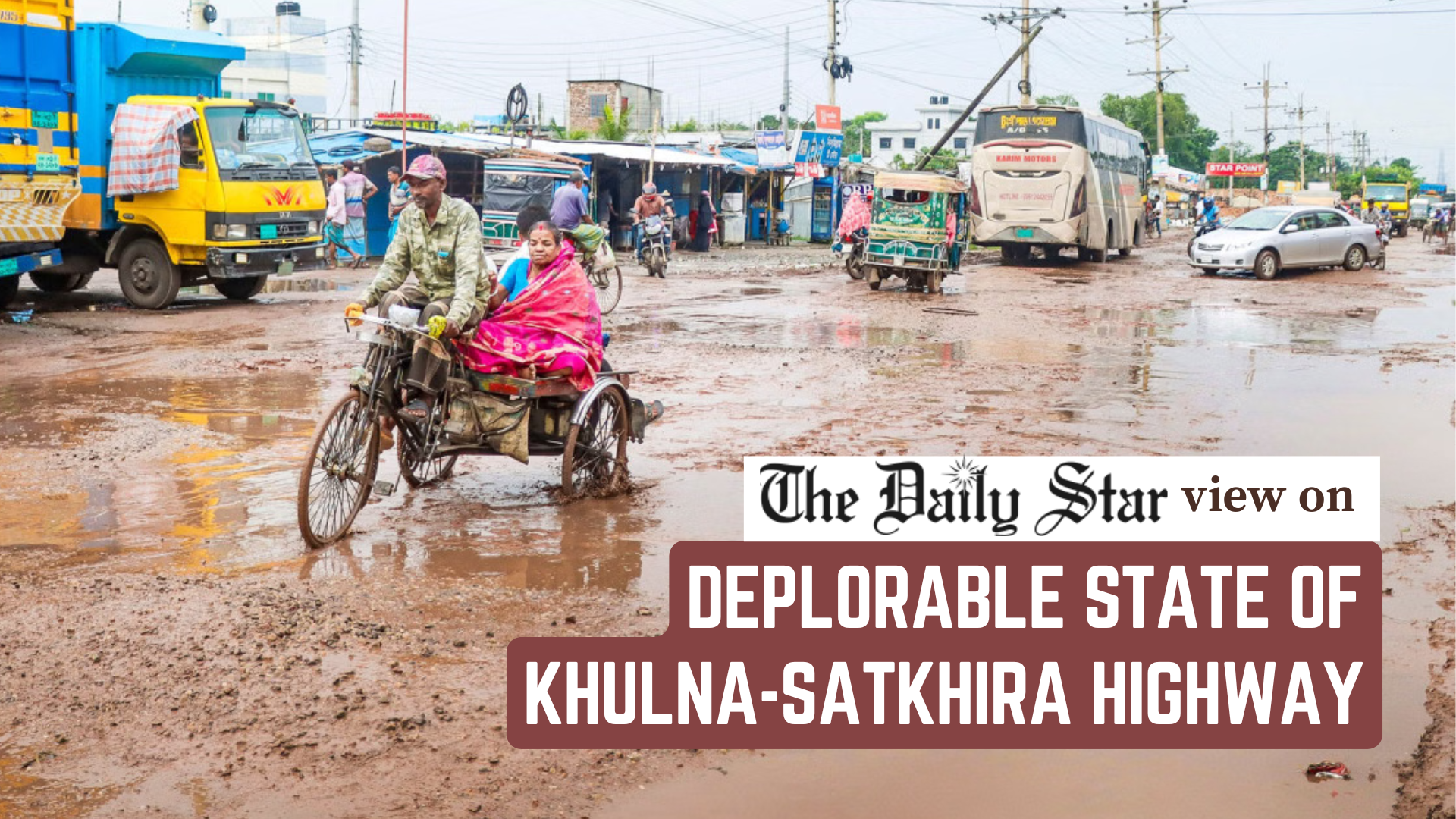Fix the Dhaka-Sylhet corridor project

Five years since its inception, the Dhaka-Sylhet corridor project stands as a testimony to project paralysis and administrative failure typical of many government undertakings. Intended to be a 210-kilometre lifeline connecting the capital to the northeast, the four-lane highway has instead become a source of daily torment for travellers, with only 15 percent of the project's objectives said to be achieved. The cost of this delay has been staggering, turning a once six-to-seven-hour drive into an agonising 12-to-15-hour endurance test.
Currently, the Tk 16,919 crore undertaking lies functionally stalled. A protracted legal quagmire, with 56 out of 66 land acquisition lawsuits unresolved, has prevented contractors from even accessing key areas. Alongside legal issues, delays in utility relocation have further complicated matters. The project director's admission that the December 2026 deadline cannot be met clearly indicates the extent of things gone haywire.
Its ripple effect has been quite evident. The old road is now riddled with deep potholes and craters, rendering travel slow and dangerous. Massive tailbacks and single-lane bottlenecks have made a 11-kilometre stretch from Ashuganj to Sarail particularly notorious. Falling under a separate, Indian-funded project, this particular stretch was abandoned after the change in government in August 2024, when Indian contractors also departed, citing security concerns. Moreover, the entire highway suffers from a lack of basic maintenance, with the authorities claiming to be "low on funds" and constrained by the future need to "break up" the old road. This highlights a critical flaw in planning: the absence of interim maintenance to manage the existing infrastructure during the multi-year construction delay.
The argument by the Roads and Highways Department for avoiding maintenance is untenable. A minimum standard of road safety and usability must be enforced. The government must allocate funding for repairs, which should be an immediate priority in the worst-hit, gridlocked zones, so that the two lanes can be properly restored wherever feasible.
The bigger problem here is the economic drag. Infrastructure delays of this magnitude multiply transport costs for businesses and impede regional connectivity. The Dhaka-Sylhet corridor is a vital trade link. Allowing it to decay to this extent demonstrates a worrying inability to execute essential public works. Commuters are now shunning the highway, causing a massive surge in demand for alternative transport. Airlines on the Dhaka-Sylhet route are reporting 90-100 percent load factors. Bangladesh Railway, overwhelmed by passengers, is struggling to cope by adding carriages and even allowing ticketless travel on "humanitarian grounds". These issues need to be resolved.
As the most critical bottleneck here is land acquisition, the authorities must immediately establish a high-level, inter-ministerial taskforce with a mandate to resolve the ongoing lawsuits. This taskforce should fast-track legal processes for disputes that directly impact all national infrastructure, since the current system is broken.



 For all latest news, follow The Daily Star's Google News channel.
For all latest news, follow The Daily Star's Google News channel. 

Comments